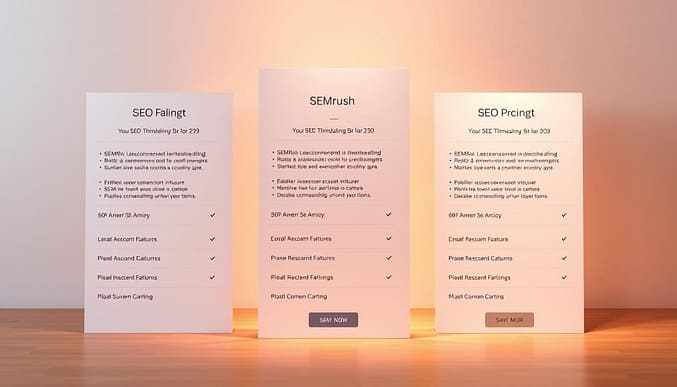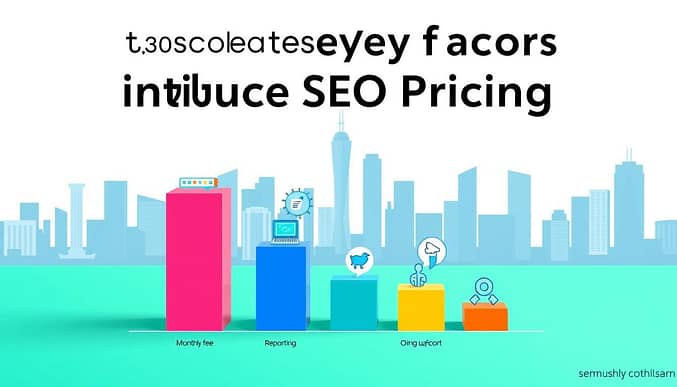SEMrush Monthly Cost: Pricing Plans & Features Explained
With over one million users worldwide, SEMrush has become a go-to platform for marketers seeking advanced SEO and content tools. Its recurring subscription model offers flexibility, with options to pay monthly or annually. Annual plans provide significant savings, making them ideal for long-term digital strategies.
The platform’s pricing tiers cater to diverse needs. The Pro plan starts at $139.95 per month, offering core features like keyword tracking and site audits. For larger teams, the Guru tier ($249.95/month) adds historical data analysis, while the Business plan ($499.95/month) supports enterprise-level projects with API access. Custom solutions are available for agencies requiring tailored limits.
Additional features like plagiarism detection and detailed PDF reports can be added to any plan. These extras help businesses scale their efforts without upgrading subscriptions. For those exploring options, a free account provides limited access to tools like position tracking and basic audits.
This guide breaks down what each tier includes, how add-ons enhance functionality, and tips for choosing the right plan based on your marketing goals. Let’s dive into the specifics of SEMrush’s tools and pricing structure.
Key Takeaways
- Three main plans available: Pro ($139.95/month), Guru ($249.95/month), and Business ($499.95/month)
- Annual billing saves up to 17% compared to monthly payments
- Add-ons like plagiarism checks ($5/month) extend functionality
- Enterprise solutions offer custom pricing for large teams
- Free tier includes limited access to SEO audits and keyword tracking
Overview of SEMrush Pricing Plans
Choosing the right SEO toolkit requires balancing budget and capabilities. SEMrush offers four tiers designed for different skill levels and team sizes. Each tier unlocks specialized tools for keyword research, competitor analysis, and performance tracking.

Plan Options: Free, Pro, Guru, and Business
The free account lets users explore basic features like limited keyword tracking and site audits. It’s ideal for beginners testing the platform. Paid subscriptions start with the Pro tier at $139.95/month, which supports 5 projects and 10,000 keywords.
Upgrading to Guru ($249.95/month) adds historical data analysis and doubles reporting limits. Enterprise teams often choose the Business plan ($499.95/month) for API access and 15,000 keywords. See our detailed SEMrush pricing breakdown for limit comparisons.
| Feature | Free | Pro | Guru | Business |
|---|---|---|---|---|
| Monthly Cost | $0 | $139.95 | $249.95 | $499.95 |
| Projects | 1 | 5 | 15 | 40 |
| Keywords Tracked | 10 | 10,000 | 15,000 | 25,000 |
| Historical Data | ✗ | ✗ | ✓ | ✓ |
Monthly Versus Annual Subscription Models
Opting for yearly billing cuts costs significantly. The Pro plan drops to $117.33/month when paid annually – a 17% saving. Larger teams benefit more: the Business tier becomes $416.66/month, freeing up cash flow for other marketing needs.
Freelancers often start monthly, while agencies prefer annual commitments. As one digital strategist notes: “The upfront annual payment stings initially, but the long-term ROI from advanced features justifies it.”
All subscriptions include 24/7 support and weekly report exports. Start with the free version to gauge value before upgrading.
Understanding semrush monthly cost
Three core elements determine your total investment in SEO tools: feature access, usage limits, and supplemental services. Each tier offers distinct combinations of these components to match different team sizes and marketing objectives.

Usage Limits and Feature Tiers
The Pro plan supports 5 active campaigns and tracks 10,000 search terms – ideal for freelancers. Scaling to Guru unlocks 15 projects and historical trend analysis. Enterprise teams benefit from 40 campaign slots and 25,000 tracked terms in the Business tier.
Reporting capabilities also vary significantly:
- Basic PDF exports in entry-level tiers
- White-label reports for agencies
- Custom data visualizations in premium plans
Customization Options
All subscriptions can be enhanced with specialized tools. Plagiarism detection starts at $5/month, while extended content audits cost $20/month. One marketing director explains: “Our agency added competitor tracking widgets to dashboards – clients love the real-time updates.”
| Add-On | Starts At | Best For |
|---|---|---|
| API Access | $200/month | Developers |
| Extra Users | $45/user | Growing teams |
| Brand Monitoring | $50/month | Reputation management |
Tailored solutions remove preset limits for high-volume agencies. These custom packages often include dedicated support and training resources.
In-Depth Look at SEMrush Features and Tools
Effective SEO campaigns require tools that adapt as strategies evolve. The platform’s suite of features provides actionable insights through real-time data analysis, helping teams refine their approaches. Below, we explore core functionalities that streamline audits, content creation, and performance monitoring.
SEO Analytics, Keyword Research, and Competitor Insights
The On Page SEO Checker identifies optimization gaps across 100,000 pages monthly in Pro plans. Advanced tiers expand limits while adding historical trend comparisons. Users track up to 500 search terms initially, scaling to thousands in premium tiers.
| Feature | Pro | Guru | Business |
|---|---|---|---|
| Keyword Tracking | 500 | 1,500 | 5,000 |
| Historical Data | ✗ | 12 months | 24 months |
| Competitor Analysis | 5 domains | 15 domains | Unlimited |
Position Tracking, Content Marketing, and Reporting Capabilities
Daily rank monitoring ensures campaigns stay aligned with search trends. The SEO Writing Assistant evaluates readability and keyword density during content creation. One marketing manager notes: “Automated checks cut our editing time by 40%, letting us focus on strategy.”
Scheduled PDF reports simplify progress reviews, while shareable dashboards keep teams informed. Higher tiers unlock white-label options for agencies. For a deeper dive into these tools, see our comprehensive platform review.
Choosing the Right Subscription for Your Marketing Needs
Picking the perfect subscription requires matching your team’s workflow with the right tools and limits. Start by evaluating your current research needs and projected growth. Freelancers often thrive with Pro plans, while agencies demand Business-tier scalability.
Comparing Pro, Guru, and Business Plan Benefits
Each tier serves distinct operational scales:
| Feature | Pro | Guru | Business |
|---|---|---|---|
| Projects | 5 | 15 | 40 |
| Keywords Tracked | 10,000 | 15,000 | 25,000 |
| API Access | ✗ | ✓ | ✓ |
| Users Included | 1 | 3 | 10 |
The Pro plan suits solo marketers needing basic position tracking. Guru unlocks historical data for trend analysis. Business tiers support multi-team collaboration with custom audit workflows.
Trial Options and Upgrade Advantages
Seven-day trials for Pro and Guru tiers let users test premium tools like enhanced PDF reporting. One agency owner shared: “The trial revealed how historical data could refine our content strategy – we upgraded immediately.”
Upgrading brings three key advantages:
- Extra users at $45/month per seat
- API integrations for automated research
- White-label reports for client presentations
Mid-sized firms often scale from Guru to Business plans when expanding keyword targets. A case study showed 68% faster audit completion after upgrading to access plagiarism checks and priority support.
Conclusion
Choosing the right SEO toolkit hinges on balancing analytics depth with budget realities. The platform’s free tier offers entry-level access to keyword tracking, while Pro and Guru plans unlock advanced reporting and historical data. Enterprise teams benefit from Business-tier scalability, including white-label dashboards and API integrations.
Your subscription cost directly reflects the value of real-time insights and campaign limits. For example, Guru’s 15-project capacity suits growing agencies, whereas Pro meets solo marketers’ needs. Prioritize plans offering the analytics precision your strategy demands – whether tracking 10,000 keywords or managing 40 campaigns.
Before committing, leverage trial periods to test features like plagiarism checks or competitor comparisons. One digital strategist notes: “Access to historical rankings transformed how we forecast trends.” This hands-on evaluation ensures your investment aligns with both current needs and future growth.
Ultimately, informed decisions stem from clear comparisons of reporting capabilities, user limits, and data access. Evaluate how each tier’s tools – from basic audits to custom integrations – accelerate your goals. Start with a free account, then scale strategically as your campaigns evolve.